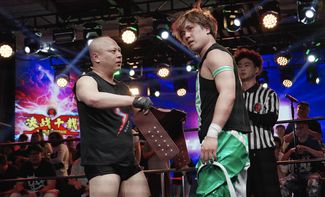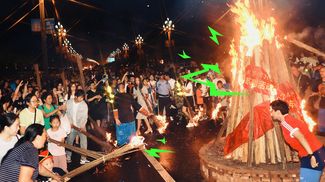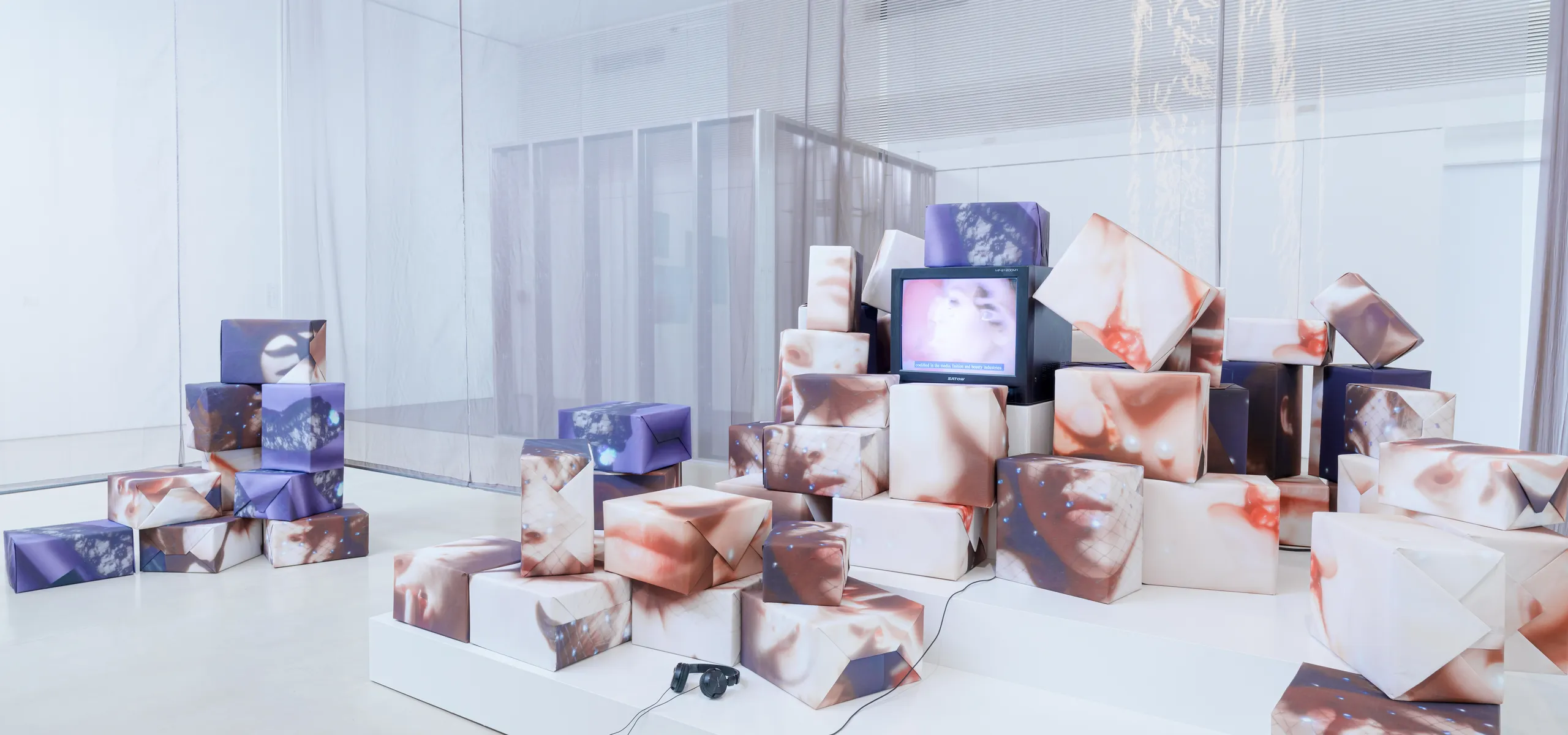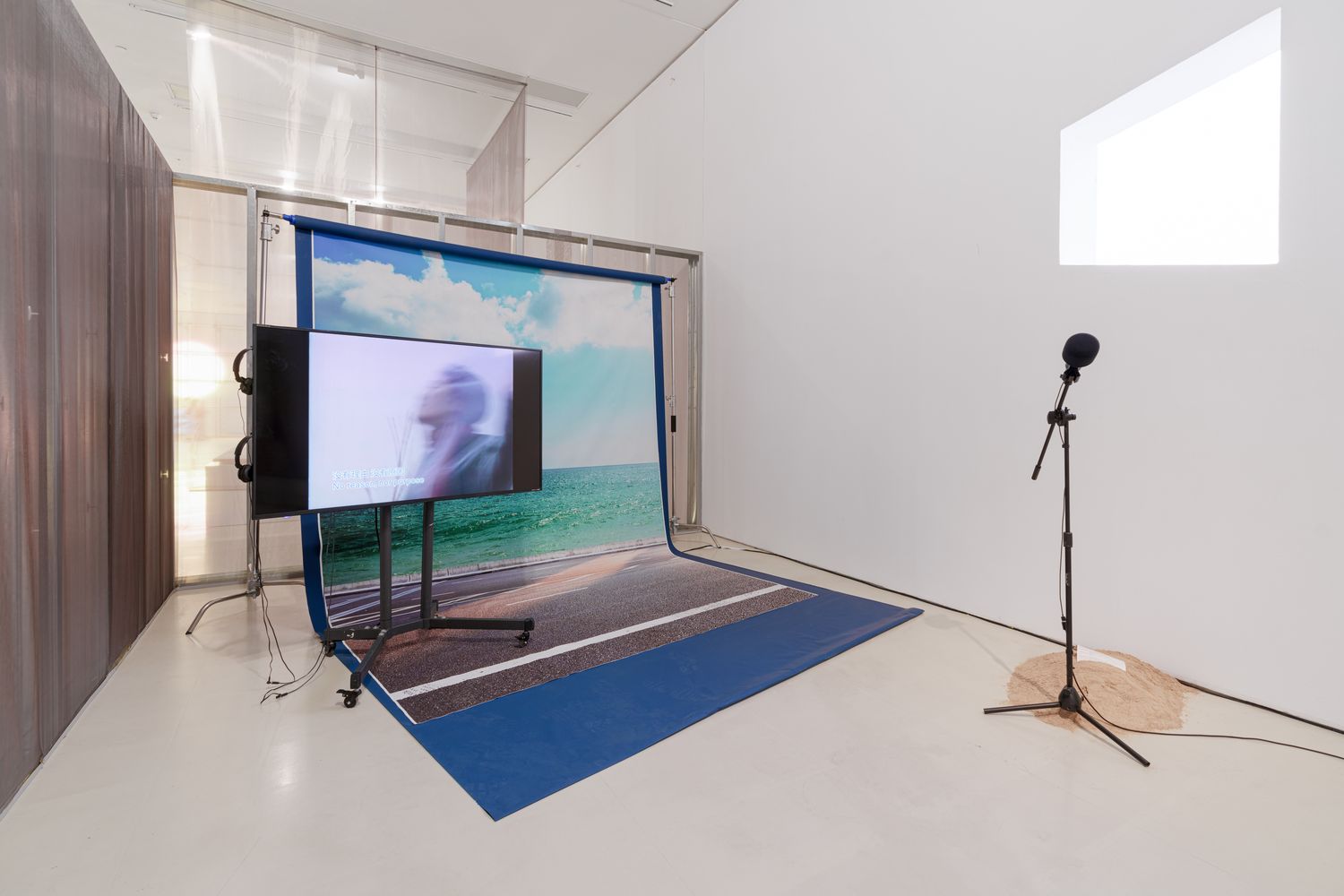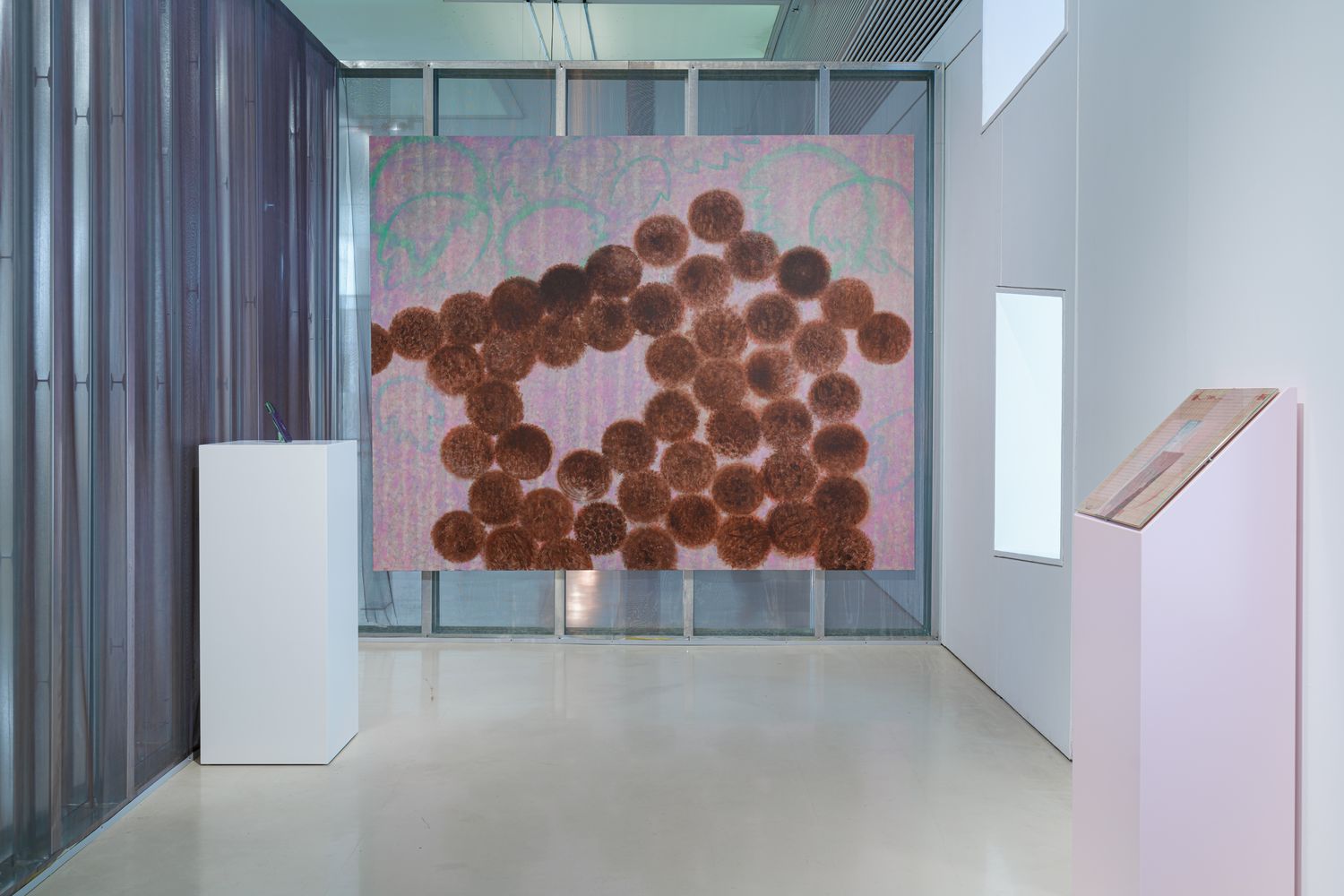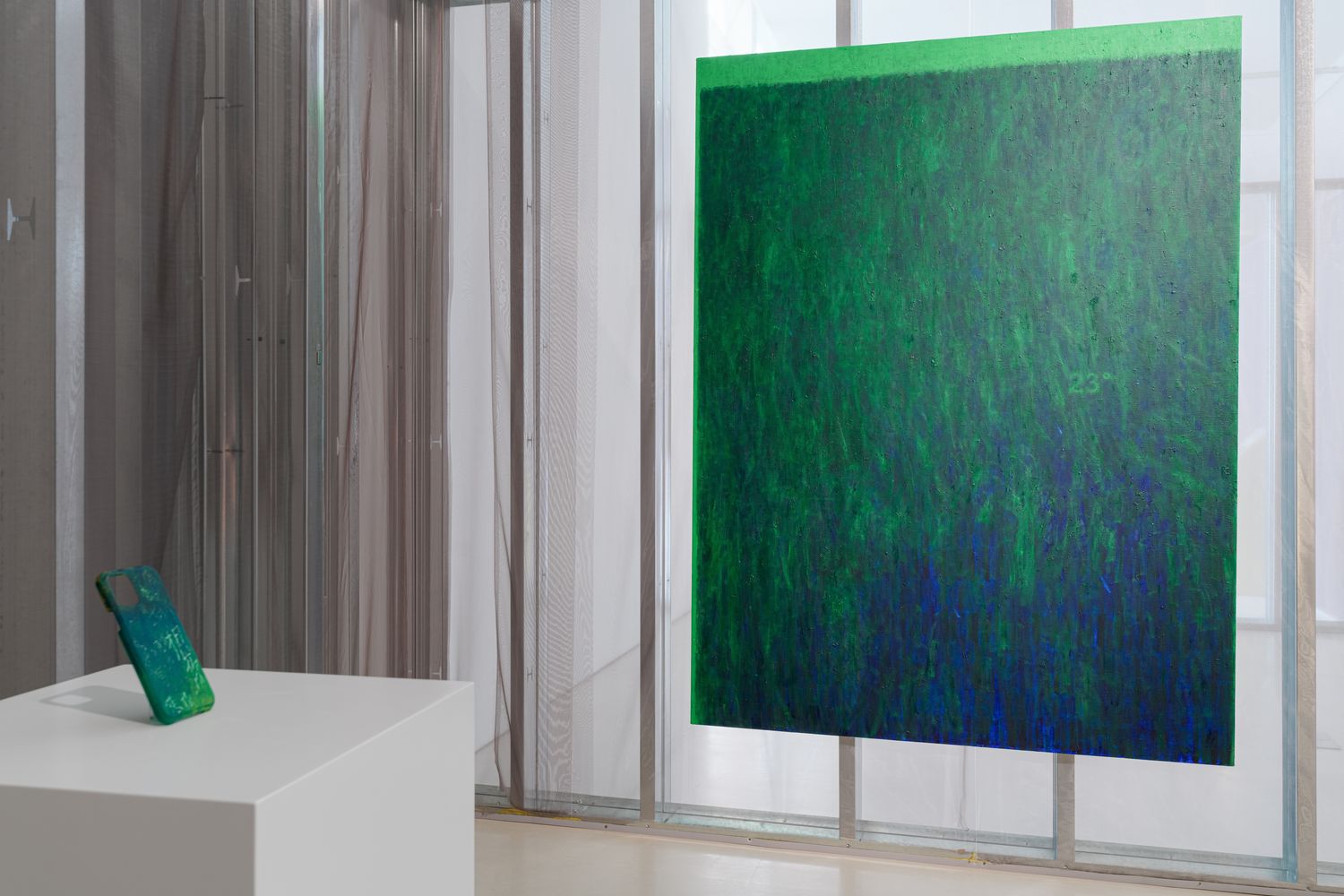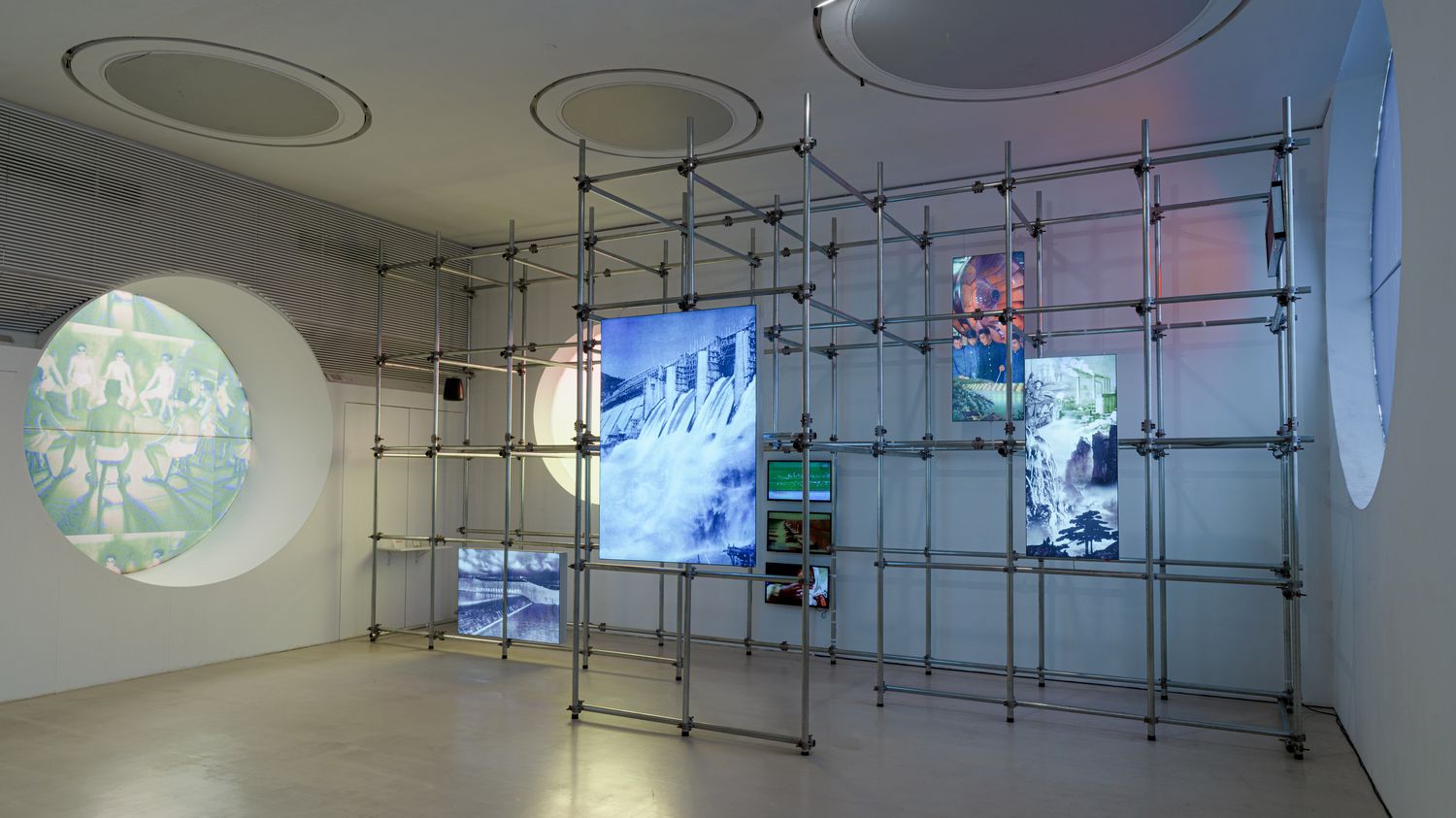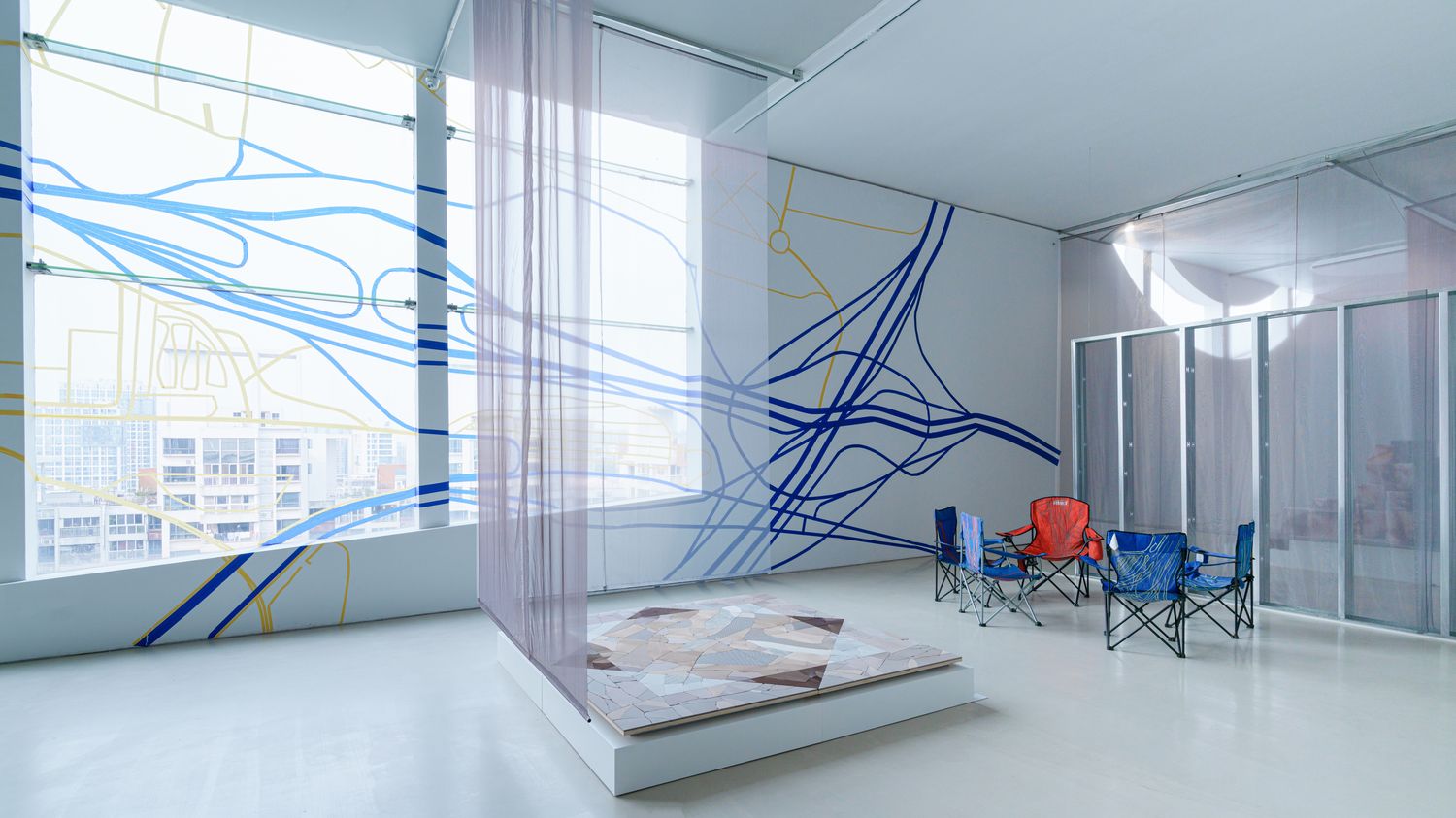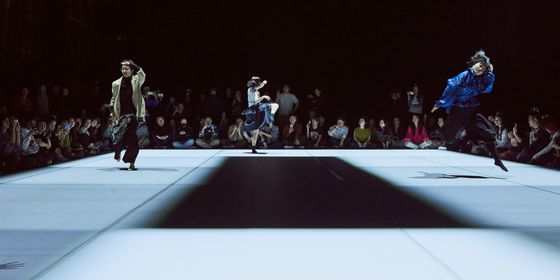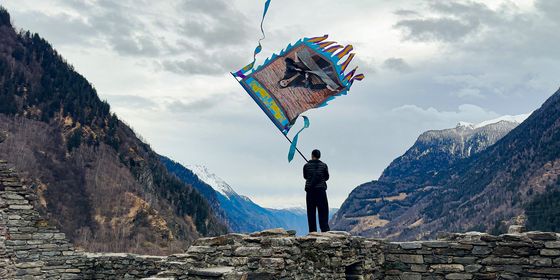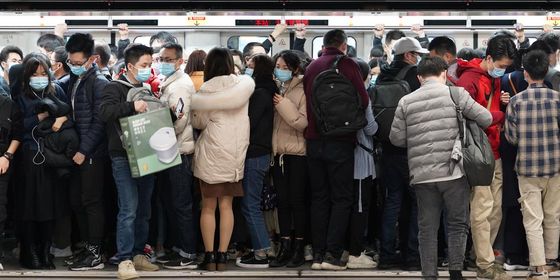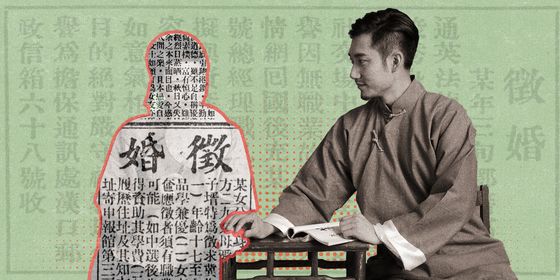An exhibition in Guangdong explores the personal emotions evoked by China’s rapid growth and construction obsession of the 1990s
Hopes, love, and lost emotions were the themes in “Follow the Feeling,” a contemporary art exhibition at Guangdong Times Museum from March 23 to June 23.
In the museum’s long, narrow space, curator Qu Chang sought to tell the story of China’s rapid development and modernization in the 1990s with art pieces that explore personal experiences amid the soaring high rises and constant building. “We imagine [the venue] as a highway; a popular object in Chinese infrastructure,” Qu told an audience during an open guide to the exhibition on May 3.
Qu, a doctoral candidate at Lingnan University in Hong Kong, built the exhibition around her thesis about how love is portrayed in modern Chinese art and popular culture. She tells TWOC she hopes to bring audiences into the dialogue between spaces in the art gallery; to make the concepts she is researching tangible for general audiences.
While China went through abstract processes such as “modernization” and “industrialization,” this exhibition extracts the individualized experience of these forces and presents them as art.
Discover more contemporary Chinese art:
- How Shuare Shizhu Creates Giant Artworks in a Chengdu Warehouse
- Too Rich: Wealth and Peril in Huang Heshan’s City Dreamscapes
- Zhao Xiaoli Blurs the Line Between Online Influencer and Artist
In one installation, the music video for Su Rui’s popular song “Follow the Feeling” (1988) plays on a television screen. “Follow the feeling, let it carry me along,” Su sings. The song captured a sense of optimism, hope, and energy in Chinese society as the economy began to take off.
The scenes in the music video (the shirtless man riding a jet ski, for example) were still new to most ordinary Chinese at the time. Karaoke had just begun to spread on the Chinese mainland, and these dazzling, unfamiliar scenes in the videos represented a sharp break from the more austere popular music and performances of the pre-reform era when official films, TV shows, and songs mainly included patriotic themes and lines about the virtues of communism.
These music videos also placed the individual at their core, with pop stars singing about personal feelings like love and longing, a change from the long period when collective spirit was the bedrock of society from 1949 to the beginning of the 1980s.
A video essay by Qu and Ye Hui, an artist based in Vienna, explores this theme as one of the exhibition’s artworks. The film plays on a TV placed in a karaoke setting: plastic posters of an umbrella and a blue sea stand behind the TV, with a microphone also forming part of the installation.
The scene would have been familiar to many in the ’90s when karaoke machines were all the rage in urban living rooms. People would sing at home, imagining they were their favorite pop stars from the music videos.
This is the period when the concept of the private came to modern China, Qu’s voice narrates over the film. It wasn’t only private ownership, but also the sense of private spaces and feelings. People began to reacknowledge the legitimacy of personal feelings, Qu argues.
It was also a time when infrastructure boomed, cities became building sites, and the construction was glorious. In another installation, viewers see images and lyrics from the song “Road to Heaven” (2001) by Han Hong. The song is an ode to the Qinghai-Xizang Highway, whose construction began in 1958 and is considered one of the great achievements of the early PRC. “That is a magical heavenly road, sending the warmth of the world to the border,” go the lyrics.
At the end of the “highway” of the exhibition, stands artists Pan Lu and Bo Wang’s “Ode to Infrastructure.” Plastic scaffolding frames pictures and videos of building work, while construction workers’ voices flow from the speakers as they say phrases and sentences similar to the lyrics from “Road to Heaven.”
Inside the scaffolding’s structure, light boxes show pages from 1950s editions of China Pictorial magazine, a state-run publication. They show waterways, roads, coal mines, and other heavy industries from that era. The piece mixes history, politics, and emotions while reflecting on the shadows of past architecture.
The piece shows the affection people had toward construction—even their worship of infrastructure—by treating the factors of production as if they were core tenets of a religion. One scene, showing construction workers circling to absorb ultraviolet lights, evokes some ancient ritual.
At the other end of the highway, on another screen, Qinghai-born artist Guo Jinhong interrogates how physical changes to a place can affect the mind and soul of an individual. Her film shows her driving through the countryside of Xining, Qinghai province, after years away, and finding her old family home demolished along with many of the city’s buildings; all in the name of progress. “The price of reform could be ignored. But since when could our lives and personal experiences be ignored as well?” a voiceover says in the film.
Guo made the trip in 2018, having left the city back in 1992. She returns to find the city and its architecture almost unrecognizable from her childhood. She interviews her parents about their memories of specific places—routes to schools, old temples, favorite restaurants—and her own reaction to the changes. “None of the top three Qinghai traditional restaurants on [review platform] Dianping has been open for more than 20 years,” she says in the documentary.
Guo decorates the space around her film in the exhibit in Tibetan style (her mother is Tibetan). Some decorations are her family’s possessions, while she bought others from the Qinghai market because they reminded her of the city she grew up in.
Guo’s piece suggests that, if the memory of one’s hometown has faded away during demolitions in the modernization period, fragments of feelings might be all we can hold onto. But this is not meant to be a depressing message, Guo tells TWOC. Each person’s memory is different. “Even me and my mom’s memories aren’t identical,” she says. The only constant is change or, as she puts it, “random impermanence.”
Curator Qu hopes the exhibition’s tone is not nostalgic. “My intention is to empower,” Qu tells TWOC. She hopes “we can capture our own feelings, and feel and analyze them [through art].” Throughout the exhibition, viewers get a sense of the personal feelings aroused during China’s rapid modernization. At the end of the highway, we are mainly left wondering: where will the road turn next?
Images courtesy of Guangdong Times Museum

